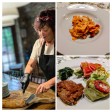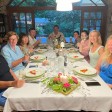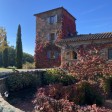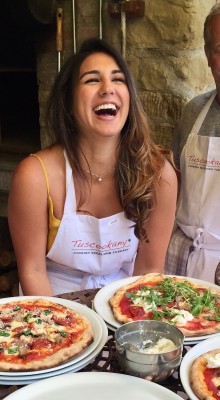Are you always wondering what the different courses are in an Italian meal?
July 19, 2019
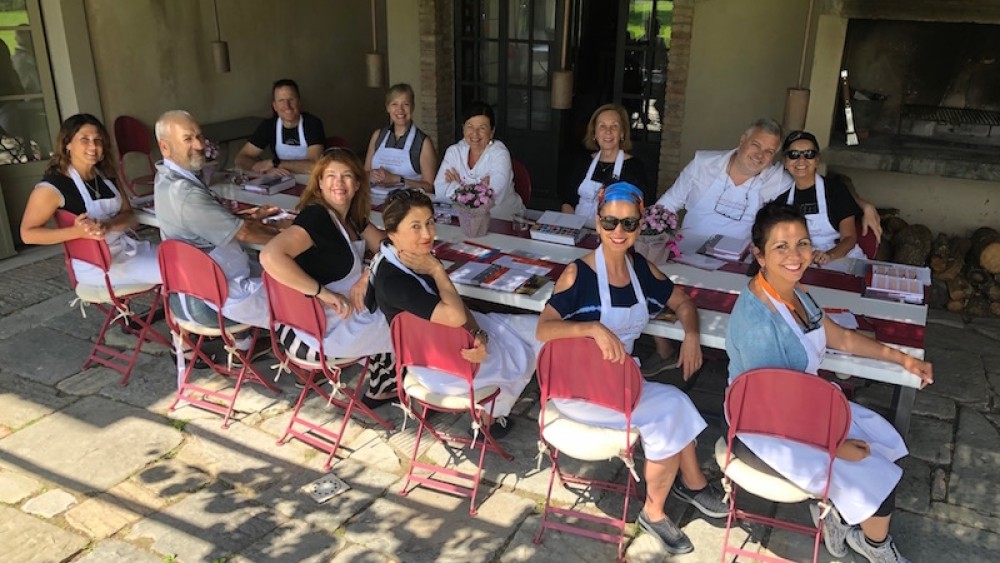
Do you have a hard time understanding the menu in an Italian restaurant? What are the different courses and what will be served with each?
Italians love their food and dining is one of their most precious moments of the day. This means getting together with family and catching up on the day, combined with a delicious homemade meal prepared by the mother and/or grandmother, and an excellent Tuscan wine. Italian Nonna’s (grandmothers) can spend a whole day in the kitchen for dinner (cena) as five different courses are prepared by her for the family. Imagine doing that every single day!! The Italian course structure provides wonderful opportunities to serve amazing food for a dinner party and makes sure everyone has something to enjoy. In this blog we show you the difference between the courses (piatti); Aperitivo, Antipasto, Primo, Secondo e contorno and Dolce.
The history of the Italian meal structure
Traditionally, meals in Italian families take two to three hours, or even longer, and really focus on the slow life. Italians love food and are passionate about eating. This is especially true of the Sunday lunch, where families gather in a restaurant to eat together. It’s very lively and an important time to catch up with loved ones. It is never rushed. It always starts with Buon Appetito! Wishing everyone a good appetite and a great meal.
Aperitivo & Antipasti – Course one and two
The aperitivo opens a meal and in that way is similar to an appetizer. This is often done standing up and gathering the dinner guests, together enjoying a wine, prosecco, Aperol Spritz or gingero. These drinks are combined with olives, crisps, nuts or cheese. It is the perfect moment to welcome your guests and wait for everyone to arrive. After the aperitivo everyone is invited to take a seat at the table where they will be able to enjoy the second course: antipasto. The antipasti is ausually a cold and light starter such as salami, finger foods, vegetables, salmon or prawn cocktails. This is a perfect starter to awaken your taste buds and get your guests longing for more. Antipasto actually means “before the meal”
Primo Piatto – Course three
Primo means “first” in Italian and is thus directed to the first main course of your dinner. This course consists of a warm dish and is usually slightly heavier than the antipasto. The dishes are mostly non-meat and could comprise of pasta, risotto, soup, gnocchi, polenta or lasagna. There are an endless amount of options for the primo piatto so you will never get bored. It is strange for non-Italians to see that pasta is just the first course in Italy, whereas the rest of the world sees pasta as a main course. This is a mistake often made within the course structure of the Italian kitchen.
Secondo e contorno – Course four
After the antipasti and the primo piatto, the second main course is served. The second course consists of several plates such as your contorno (side dishes), insalata (salads) and your secondo piatto (second course). This course includes different types of meats and fish, which might consist of turkey, sausage, pork, steak, beef, cod, lamb or chicken. This is the most important meal of the Italian course structure. The side dishes of vegetables, which are raw, cooked or grilled and are meant to be shared across the table, (LINK TO VEGETABLE BLOG) and are served alongside the secondo piatto. This pairing makes it easy to serve meat with a robust plant-based dishes, which will delight every guest. The salad is mostly an easygoing salad with some seasonal greens and a simple dressing or frequently you would add your own oil and vinegar to your taste. In this way the salad accommodates everyone at the table.
The first two courses are often served combined with white wine; this third course is mostly served with one of the well-known Tuscan red wines made from the Sangiovese grape.
Dolce – Course five
If the above four courses haven’t blown your mind, this one will! Dolce means sweet in Italian and thus refers to the dessert. I can’t help but recall all the Italians desserts I love when thinking of the word “Dolce”. The most popular desserts are Tiramisu, Panna Cotta, Torta della Nonna and Panettone. The desserts are often accompanied by a scoop of homemade Italian gelato or sorbetto and, of course, let’s not forget the Vin Santo (dessert wine), which regularly accompanies it. Dolce differ in taste nationwide, but the ideas are mostly the same. They are often followed by a coffee, used as a digestive, which is served as a very hot espresso in a small cup. After the coffee the ammazza caffe is served, which concludes the meal. This of course comprises of the famous Italian liquors such as Amaro, Limoncello, Grappa or other herbal drinks.
Cooking Course in Tuscany
During an Italian cooking course at Tuscookany the chefs will teach you all types of dishes from aperitivo to dolce. You will learn to prepare and cook all five of them, so you will really get to understand the difference! We start with an Aperitivo on the lawn, which is often an Aperol Spritz. Following this you might be surprised to see a millefoglie with vegetables served by the chef and then, of course, comes the primo; fresh and homemade pasta. The secondo could be a nice braised beef in red wine, complemented with a vegetable tart and fresh salad. The dolce is served together with a selection of Italian liquors and the Italian almond cookies; Cantucci.
During the cooking lessons, the most fun part is that you will be paired up with different cooking partners; so you will be able to get to know the whole group and prepare these delicious courses together. Sounds a bit daunting? Don’t worry; the chefs will always be there to help you. The chef will also show you how to present your food to show it off to its best and during dinner you will be given the opportunity to tell the rest of the group what the secrets are to your dishes success.
Buon Appetito and share this blog if you think it was interesting!
The Tuscookany Team
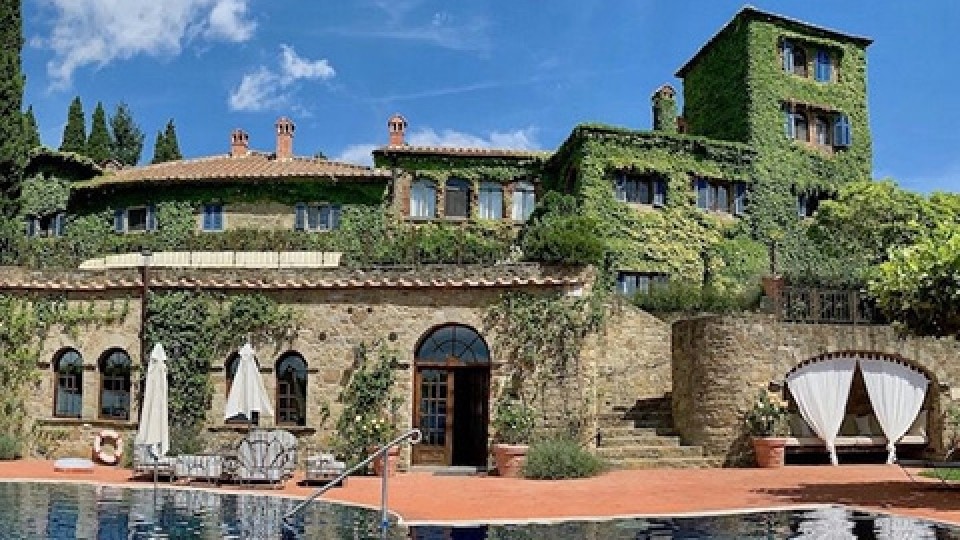
Interested in our cooking courses at one of our Tuscan villas?
Do you want to enjoy our Tuscany cooking classes with plenty of time to explore in your free time, all while staying in an amazing villa?
Reviews
How our guests experienced the Tuscookany courses
Reviews from our former guests made about their visit to Tuscookany on TripAdvisor, facebook, Twitter, Google, Chow and Yelp.


